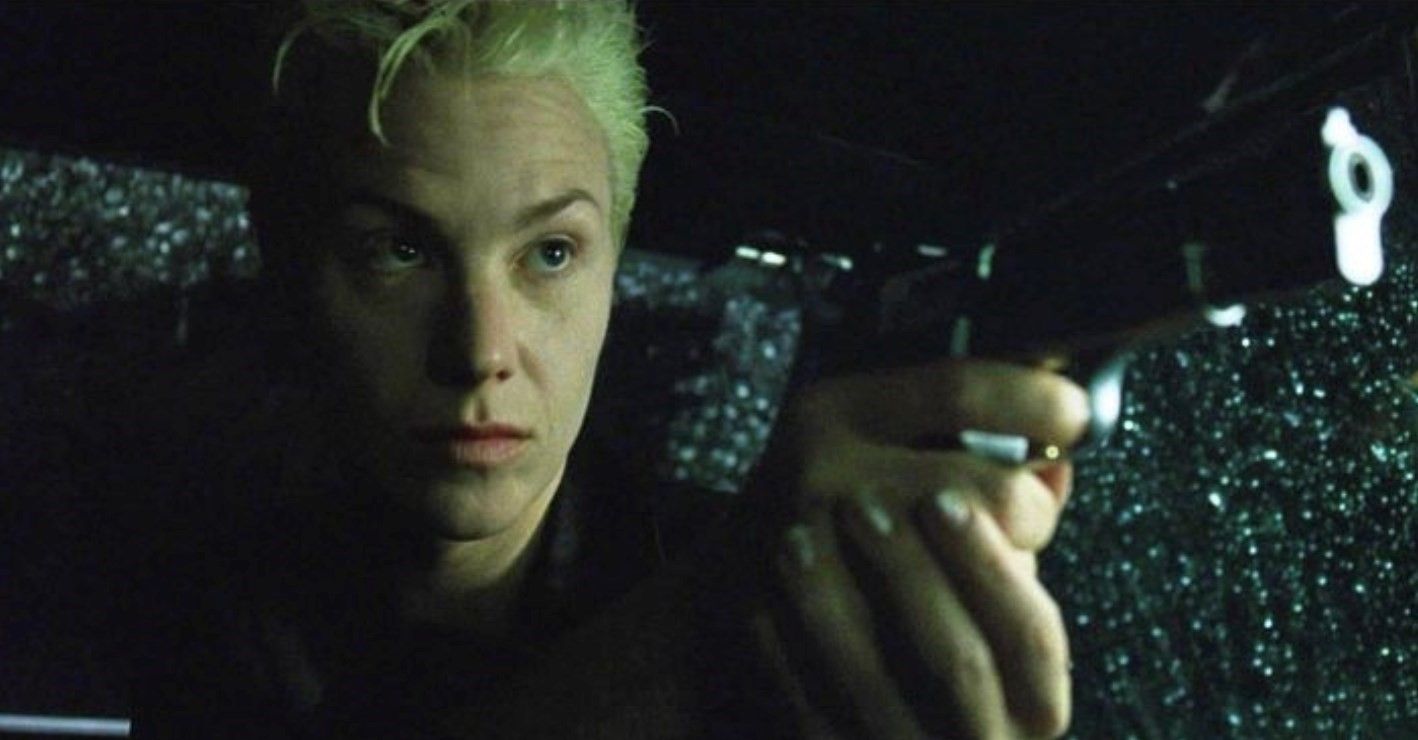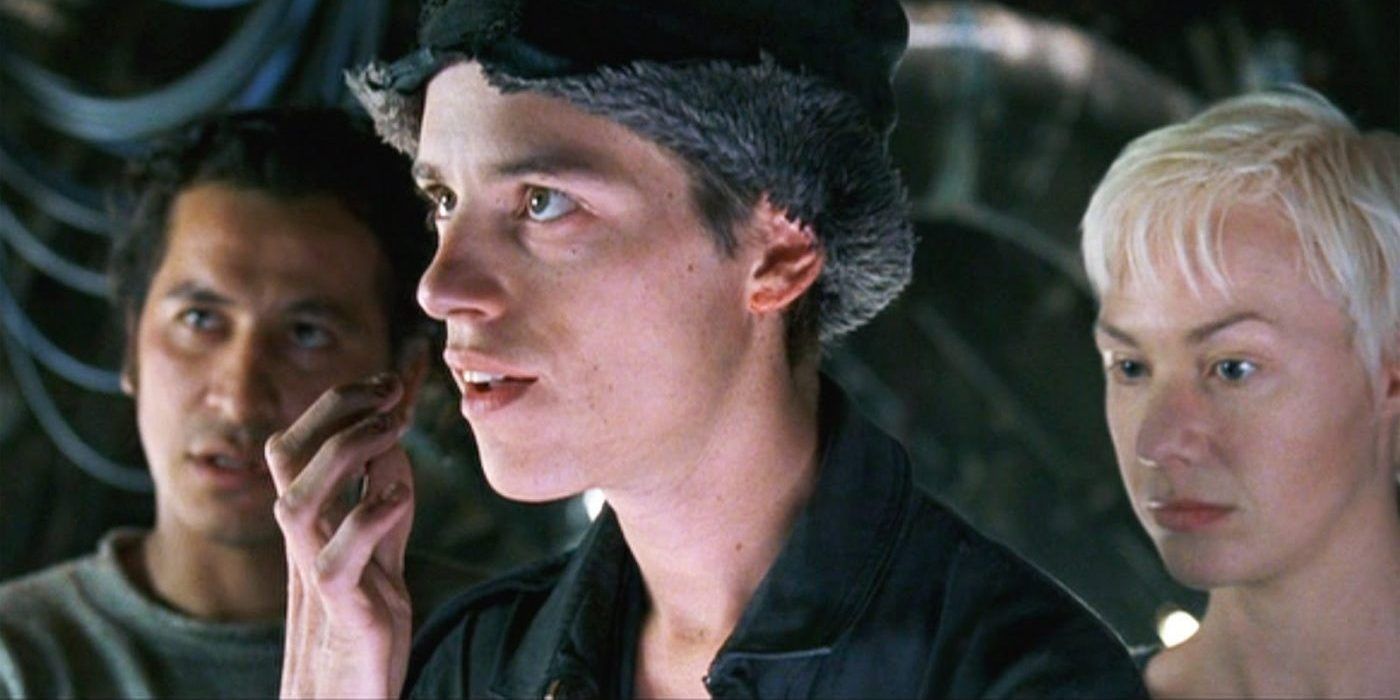In the groundbreaking movie The Matrix, when everyone else wears black, Switch wears full white. The uniquely bright operative in this seminal sci-fi film is dressed opposite the rest of The Matrix cast. When compared to the usual dark suits and black dusters worn in The Matrix, Switch sports a different look that lends more to their character.
Sisters Lana and Lilly Wachowski brought forth Warner Bros.’ dystopian science fiction classic The Matrix in 1999. Iconic characters like Trinity (Carrie-Anne Moss), Neo (Keanu Reeves) instantly stood out, but the role of Switch (Belinda McClory) became recognizable to a massive audience that ate up the box office hit for its fresh style and ingenuity. Beyond its $467M take worldwide, The Matrix made a huge impression on popular culture at large. From music to fashion, this trendsetting film boasted more than slick VFX soaked in nineties tech culture. Deeper meanings and allegories were scattered throughout The Matrix thanks to its rich, complex message about humanity.
The reason why Switch is wearing all white instead of the usual black is that it projects the duality of her nature originally planned in The Matrix. In fact, the detail hidden in the film’s symbolism (like the red and blue pill) shows that the Wachowskis had a lot more in mind for Switch. Specifically, when auditioning for The Matrix, Belinda McClory thought she was only going for half of the role. Originally, the character was arranged to be played by androgynous actors, making the role split into two. Because of studio meddling, this idea did not go according to the Wachowski’s plan. Hence, the dichotomy of McClory as Switch was represented by a stark white theme amongst the sea 0f black. This artistic choice indicates the attention the creators of The Matrix gave to their characters. Switch highlights a critical point in the film’s idea of the residual self-image.
Notably, Switch stands out from the team of the Nebuchadnezzar ship with bleach blonde hair while everyone else has dark hair, but there is more that makes her unique. For instance, to portray both sides of Switch, the actress would have been played by a male actor when in the real world. When Switch entered the Matrix, they would then be represented in a female form. This choice explains the name Switch, who wore a noticeable contrast of white to highlight this easter egg. However, because Warner Bros. later refined the Wachowski’s idea, this required McClory to play female roles in and out of both environments. When exploring the reason for not making it to the final cut, Lilly Wachowski explained, “The corporate world wasn’t ready for it.” Undoubtedly, it was no coincidence that the nonbinary Switch presented as androgynous, to pay homage to the original concept. Lilly Wachowski considers The Matrix movie plot a trans allegory, so Switch was the perfect character to fulfill the directors’ initial vision. Before an untimely death, her last words pleaded, “Not like this,” making Switch’s intended role more heartbreaking.
Throughout their career, the Wachowskis personally and artistically showed interest in gender transformation, as seen in their writing and original concepts for film and TV. The Wachowski sisters themselves now identify as transgender women, which has made an imprint on their cinematic efforts. Since The Matrix debuted its boundary-breaking storytelling, the Wachowskis have branched out into similar projects, allowing their original idea in The Matrix to expand. In particular, Netflix’s Sense8 was a revolutionary series from 2015 that explored gender identity and featured transgender characters. The woefully canceled series gave much-needed attention to other Wachowski projects that told queer narratives. Just like the original plan for Switch that was axed, networks and studios can be wary to feature such daring content. The Matrix illustrated why Switch wore white, while everyone else wore black. While the duality of Switch dared to shed light on gender symbolism, their inclusion proved how the Wachowskis demanded representation in film from the very beginning.


